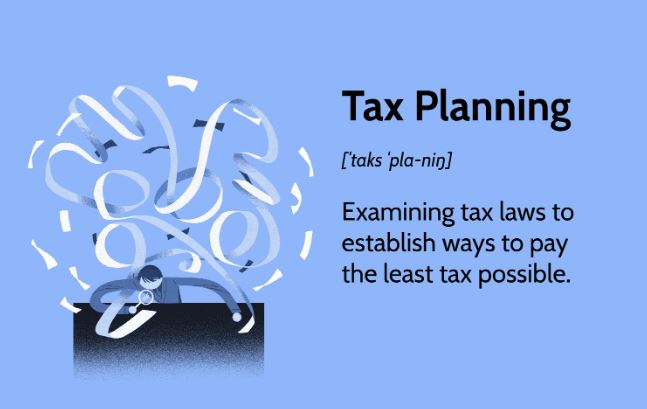How to Plan for Investment Taxes

How to Plan for Investment Taxes
Effective tax planning is a crucial aspect of investment management, helping you maximize after-tax returns and minimize tax liabilities. Here’s a guide to help you plan for investment taxes:
How to Plan for Investment Taxes
1. Understand Tax Implications of Different Investments
1.1. Taxable vs. Tax-Advantaged Accounts
- Taxable Accounts: Investments held in taxable accounts, such as regular brokerage accounts, are subject to capital gains taxes on profits and may also generate taxable interest and dividends.
- Tax-Advantaged Accounts: Accounts like Roth IRAs, traditional IRAs, and 401(k)s offer tax benefits. Roth IRAs provide tax-free withdrawals, while traditional IRAs and 401(k)s offer tax-deferred growth and may reduce taxable income in the year contributions are made.
1.2. Different Investment Types
- Stocks and Bonds: Gains from the sale of stocks and bonds are subject to capital gains tax. Short-term gains (from assets held less than a year) are taxed at ordinary income rates, while long-term gains (from assets held longer than a year) benefit from lower long-term capital gains rates.
- Dividends and Interest: Qualified dividends are taxed at long-term capital gains rates, while non-qualified dividends and interest income are taxed at ordinary income rates.
- Real Estate and Other Assets: Investments in real estate or other non-traditional assets may have different tax implications, such as depreciation benefits or alternative investment tax rules.
2. Utilize Tax-Advantaged Accounts
2.1. Retirement Accounts
- Traditional IRAs and 401(k)s: Contributions to traditional IRAs and 401(k)s may be tax-deductible, and investment gains grow tax-deferred. Withdrawals are taxed as ordinary income.
- Roth IRAs and Roth 401(k)s: Contributions are made with after-tax dollars, but qualified withdrawals are tax-free. This is beneficial for those expecting higher tax rates in retirement.
2.2. Health Savings Accounts (HSAs)
- Triple Tax Advantage: Contributions to HSAs are tax-deductible, investment growth is tax-free, and withdrawals for qualified medical expenses are also tax-free.
3. Implement Tax-Efficient Investment Strategies
3.1. Tax-Loss Harvesting
- Offset Gains: Sell investments at a loss to offset capital gains and reduce taxable income. Losses can be used to offset up to $3,000 of other income per year, with remaining losses carried forward to future years.
- Wash Sale Rule: Be aware of the wash sale rule, which disallows deductions for losses on securities sold and repurchased within 30 days.
3.2. Asset Location
- Tax-Efficient Allocation: Place tax-efficient investments, such as index funds or municipal bonds, in taxable accounts, and allocate tax-inefficient investments, such as bonds or actively managed funds, to tax-advantaged accounts.
- Minimize Taxable Income: This strategy helps minimize taxable income and optimize after-tax returns by strategically placing investments based on their tax characteristics.
4. Plan for Capital Gains and Dividends
4.1. Long-Term vs. Short-Term Capital Gains
- Long-Term Capital Gains: Investments held for over a year are taxed at long-term capital gains rates, which are generally lower than short-term rates.
- Short-Term Capital Gains: Investments held for less than a year are taxed at ordinary income rates. Consider holding investments longer to benefit from lower long-term capital gains rates.
4.2. Qualified Dividends
- Tax Rates: Qualified dividends are taxed at long-term capital gains rates, which are lower than ordinary income rates. Ensure that your investments qualify for these favorable tax rates.
5. Keep Accurate Records
5.1. Track Transactions
- Document Trades: Keep detailed records of all investment transactions, including purchase dates, sale dates, costs, and proceeds. Accurate records are essential for calculating capital gains and losses.
- Retain Statements: Save statements and documentation from brokerage accounts, retirement accounts, and other investment accounts for accurate tax reporting.
5.2. Use Tax Software or Professional Help
- Tax Software: Utilize tax software to help track and calculate investment gains, losses, and tax liabilities.
- Professional Assistance: Consider consulting a tax advisor or accountant for personalized tax planning and to ensure compliance with tax regulations.
6. Stay Informed on Tax Law Changes
6.1. Monitor Tax Legislation
- Updates: Stay informed about changes in tax laws that may affect your investment strategy. Tax laws can change frequently, impacting tax rates, deductions, and investment rules.
- Adjust Strategy: Be prepared to adjust your investment strategy based on new tax regulations or opportunities for tax savings.
6.2. Regular Reviews
- Annual Review: Regularly review your investment portfolio and tax situation to ensure that your strategy remains effective and tax-efficient.
- Plan Adjustments: Make necessary adjustments to your investment and tax planning strategies based on changes in your financial situation or tax laws.
Conclusion
Effective investment tax planning involves understanding the tax implications of different investments, utilizing tax-advantaged accounts, implementing tax-efficient strategies, and keeping accurate records. By planning for investment taxes, you can optimize your after-tax returns, reduce tax liabilities, and achieve your financial goals more efficiently. Regularly reviewing your tax strategy and staying informed about tax law changes will help you manage your investments effectively and make the most of your financial opportunities.

